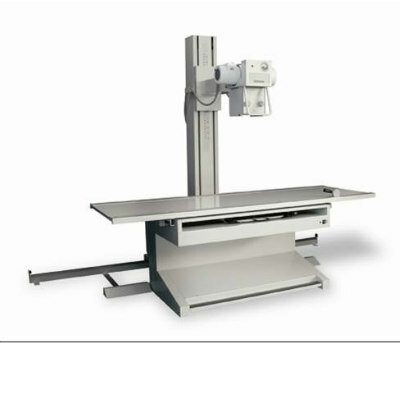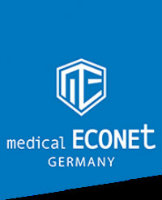Novel Micro-Computed Tomography (Micro-CT) Imaging Method Could Significantly Reduce Scan Times
|
By MedImaging International staff writers Posted on 17 Mar 2022 |

Micro-computed tomography (micro-CT) is an imaging method based on X-ray images which are reconstructed to form a three-dimensional image of the internal structure of samples with small dimensions. Researchers in biomedical physics and biology have significantly improved micro-CT, more specifically imaging with phase contrast and high brilliance X-ray radiation.
Researchers at the Technical University of Munich (TUM, Bavaria, Germany) have developed a new microstructured optical grating and combined it with new analytical algorithms. The new approach makes it possible to depict and analyze the microstructures of samples in greater detail, and to investigate a particularly broad spectrum of samples. Researchers in biology, medicine or material sciences can use this method to obtain information on the structure and characteristics of tissue and material samples which are important in diagnoses and other analyses.
X-ray imaging with phase contrast is particularly well-suited for investigating soft tissue. The method employs the refraction of the X-rays caused by the sample's structures in order to obtain contrast for these structures and thus to depict soft tissue in greater detail than it is possible with conventional X-ray methods. In many phase-contrast methods, optical components modulate the X-rays on their way to the detector, resulting in what is referred to as a diffraction pattern at the detector. Until now inefficient structures such as sandpaper and absorption masks have been used for this type of modulation, but in the meantime a variety of optical gratings are available.
TUM researchers have now introduced a new method for micro-CT with phase contrast using high-brilliance X-ray radiation. The technology is based on a newly developed optical grating referred to as a Talbot Array Illuminator. This new optical element is comparatively easy to produce, is resilient to X-ray radiation and can be used with different energies. This establishes the technically necessary prerequisites for high contrast. The new method enables more efficient use of the radiation dose than with ordinary modulators such as sandpaper and significantly reduces scan times.
The new technology can be used to investigate a particularly broad spectrum of samples. Researchers can even simultaneously depict materials of greatly differing compositions, for example water and oil embedded in stone, which was not possible in the past using conventional methods. This provides crucial advantages over conventional methods not only in medicine and biology, but also opens up new application possibilities in material sciences, for example in geology.
“By combining our newly developed Talbot Array Illuminator with new analysis software optimized for the purpose, we've been able to significantly improve imaging and analysis with micro-CT,” said Julia Herzen, professor of Biomedical Imaging Physics at TUM. “The new technology is more sensitive than comparable methods in this field. At very high resolutions, it allows to depict soft tissue with higher contrast than previously. High sensitivity is particularly important for example in order to detect fine differences within soft tissue.”
"In contrast to previous approaches, our new method also makes quantitative analysis possible. We can make and compare absolute measurements of the electron density of samples, without the need for any assumptions about the samples," added Prof. Herzen.
Related Links:
Technical University of Munich
Latest Radiography News
- Novel Breast Imaging System Proves As Effective As Mammography
- AI Assistance Improves Breast-Cancer Screening by Reducing False Positives
- AI Could Boost Clinical Adoption of Chest DDR
- 3D Mammography Almost Halves Breast Cancer Incidence between Two Screening Tests
- AI Model Predicts 5-Year Breast Cancer Risk from Mammograms
- Deep Learning Framework Detects Fractures in X-Ray Images With 99% Accuracy
- Direct AI-Based Medical X-Ray Imaging System a Paradigm-Shift from Conventional DR and CT
- Chest X-Ray AI Solution Automatically Identifies, Categorizes and Highlights Suspicious Areas
- AI Diagnoses Wrist Fractures As Well As Radiologists
- Annual Mammography Beginning At 40 Cuts Breast Cancer Mortality By 42%
- 3D Human GPS Powered By Light Paves Way for Radiation-Free Minimally-Invasive Surgery
- Novel AI Technology to Revolutionize Cancer Detection in Dense Breasts
- AI Solution Provides Radiologists with 'Second Pair' Of Eyes to Detect Breast Cancers
- AI Helps General Radiologists Achieve Specialist-Level Performance in Interpreting Mammograms
- Novel Imaging Technique Could Transform Breast Cancer Detection
- Computer Program Combines AI and Heat-Imaging Technology for Early Breast Cancer Detection
Channels
Radiography
view channel
Novel Breast Imaging System Proves As Effective As Mammography
Breast cancer remains the most frequently diagnosed cancer among women. It is projected that one in eight women will be diagnosed with breast cancer during her lifetime, and one in 42 women who turn 50... Read more
AI Assistance Improves Breast-Cancer Screening by Reducing False Positives
Radiologists typically detect one case of cancer for every 200 mammograms reviewed. However, these evaluations often result in false positives, leading to unnecessary patient recalls for additional testing,... Read moreMRI
view channel
PET/MRI Improves Diagnostic Accuracy for Prostate Cancer Patients
The Prostate Imaging Reporting and Data System (PI-RADS) is a five-point scale to assess potential prostate cancer in MR images. PI-RADS category 3 which offers an unclear suggestion of clinically significant... Read more
Next Generation MR-Guided Focused Ultrasound Ushers In Future of Incisionless Neurosurgery
Essential tremor, often called familial, idiopathic, or benign tremor, leads to uncontrollable shaking that significantly affects a person’s life. When traditional medications do not alleviate symptoms,... Read more
Two-Part MRI Scan Detects Prostate Cancer More Quickly without Compromising Diagnostic Quality
Prostate cancer ranks as the most prevalent cancer among men. Over the last decade, the introduction of MRI scans has significantly transformed the diagnosis process, marking the most substantial advancement... Read moreUltrasound
view channel
Deep Learning Advances Super-Resolution Ultrasound Imaging
Ultrasound localization microscopy (ULM) is an advanced imaging technique that offers high-resolution visualization of microvascular structures. It employs microbubbles, FDA-approved contrast agents, injected... Read more
Novel Ultrasound-Launched Targeted Nanoparticle Eliminates Biofilm and Bacterial Infection
Biofilms, formed by bacteria aggregating into dense communities for protection against harsh environmental conditions, are a significant contributor to various infectious diseases. Biofilms frequently... Read moreNuclear Medicine
view channel
New SPECT/CT Technique Could Change Imaging Practices and Increase Patient Access
The development of lead-212 (212Pb)-PSMA–based targeted alpha therapy (TAT) is garnering significant interest in treating patients with metastatic castration-resistant prostate cancer. The imaging of 212Pb,... Read moreNew Radiotheranostic System Detects and Treats Ovarian Cancer Noninvasively
Ovarian cancer is the most lethal gynecological cancer, with less than a 30% five-year survival rate for those diagnosed in late stages. Despite surgery and platinum-based chemotherapy being the standard... Read more
AI System Automatically and Reliably Detects Cardiac Amyloidosis Using Scintigraphy Imaging
Cardiac amyloidosis, a condition characterized by the buildup of abnormal protein deposits (amyloids) in the heart muscle, severely affects heart function and can lead to heart failure or death without... Read moreImaging IT
view channel
New Google Cloud Medical Imaging Suite Makes Imaging Healthcare Data More Accessible
Medical imaging is a critical tool used to diagnose patients, and there are billions of medical images scanned globally each year. Imaging data accounts for about 90% of all healthcare data1 and, until... Read more
Global AI in Medical Diagnostics Market to Be Driven by Demand for Image Recognition in Radiology
The global artificial intelligence (AI) in medical diagnostics market is expanding with early disease detection being one of its key applications and image recognition becoming a compelling consumer proposition... Read moreIndustry News
view channel
Bayer and Google Partner on New AI Product for Radiologists
Medical imaging data comprises around 90% of all healthcare data, and it is a highly complex and rich clinical data modality and serves as a vital tool for diagnosing patients. Each year, billions of medical... Read more





















